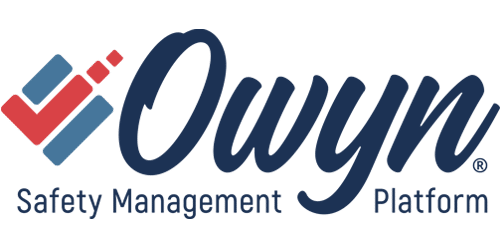Guide to Changing the Human Nature Culture Around Safety
Introduction
Creating a culture of safety within a company is essential for reducing workplace injuries and increasing compliance. However, changing human nature—our instinctual responses to risk—can be challenging. This guide outlines a three-step plan that business owners can implement to foster a safety-first mindset among employees and management.
Step 1: Educate Employees on Risks and Hazards
Understanding the Importance of Education
Education is the foundation of a safety culture. When employees are informed about potential risks, they are more likely to recognize hazards and take precautions. Education can take many forms, including:
- Online Training Programs: Utilize online training platforms to provide employees with access to safety training at their convenience. This allows employees to learn at their own pace and revisit materials as needed, ensuring they fully understand safety protocols.
- In-Person Training: Conduct in-person training sessions to provide hands-on experience with safety equipment and procedures. These sessions allow for real-time interaction and the opportunity to address specific questions or concerns.
- Virtual Toolbox Talks: Conduct virtual toolbox talks that can be accessed anytime, anywhere. These brief, focused discussions on specific safety topics can be recorded and shared with employees, providing a valuable resource for ongoing safety education.
- Micro-Trainings: Implement micro-training sessions that focus on specific safety topics in short, digestible formats. These can be delivered through mobile apps or online platforms, allowing employees to engage with safety content in a way that fits their schedules.
Action Item: Schedule Regular Safety Training
- Frequency: Consider hosting safety training sessions quarterly or bi-annually.
- Content: Tailor the content to address specific hazards relevant to your workplace.
- Involvement: Encourage employees to participate in planning the training sessions, ensuring the content is relevant and engaging.
Step 2: Encourage Open Communication
Creating a Safe Space for Dialogue
Open communication is crucial for identifying and addressing safety concerns. Employees should feel comfortable reporting unsafe conditions without fear of retaliation. Strategies to promote open communication include:
- Regular Safety Circles: Schedule regular safety circles or brief meetings where employees can openly discuss safety concerns and share best practices. This fosters collaboration and encourages everyone to participate in safety discussions.
- Safety Feedback Sessions: Hold regular sessions where employees can share their thoughts and experiences regarding safety practices. This encourages open dialogue and reinforces a culture of safety.
- Safety Champions: Designate “safety champions” within teams—employees who are passionate about safety and can advocate for best practices among their peers. This peer-to-peer approach encourages open dialogue and collaboration.
Action Item: Create Regular Safety Circles
- Frequency: Hold these circles weekly or bi-weekly to maintain ongoing dialogue.
- Format: Keep the circles informal and allow all team members to contribute.
- Focus: Encourage discussions around recent safety incidents, near misses, or innovative safety solutions.
Step 3: Lead by Example
The Role of Management in Safety Culture
Management plays a crucial role in shaping a safety culture. When management prioritizes safety and follows safety protocols, employees are more likely to do the same. Strategies for leading by example include:
- Conducting Regular Safety Audits: Regular audits can help identify potential hazards and areas for improvement.
- Providing Feedback: Provide constructive feedback to employees about their safety practices, reinforcing the importance of safety.
Action Item: Conduct Regular Safety Audits
- Frequency: Schedule audits quarterly or annually.
- Process: Use a checklist to ensure all areas are assessed.
- Follow-Up: Share audit results with employees and discuss areas for improvement.
Conclusion
Changing the human nature culture around safety requires commitment from both employees and management. By educating employees about risks, encouraging open communication, and leading by example, business owners can create a safety-first culture that benefits everyone.
Get started today! Whether you choose to implement these changes on your own or engage an external partner, the important thing is to take action. OWYN Safety can help you meet your needs with our All-In-One Safety Program, which includes online training and a complete safety management system—all on one platform at no additional cost.
To learn more about how OWYN Safety can support your safety culture transformation, click here to visit OWYNsafety.com. By following this guide, you can take meaningful steps to change the safety culture in your organization, ultimately leading to a safer and more productive workplace.
If you have any questions or need immediate assistance, please don’t hesitate to reach out! You can connect with us through our Live Chat or call us at 888-475-5353, available Monday through Friday, from 9 AM to 5 PM EST.
Have Questions When We’re Not Available? Our AI Chatbot Is Here to Help!
We understand that safety questions can arise at any time. That’s why we offer an AI chatbot, trained by our safety experts, to assist you 24/7. This continuously improving chatbot is designed to answer as many of your safety-related questions as possible, ensuring you have the support you need, even when our team is unavailable.
